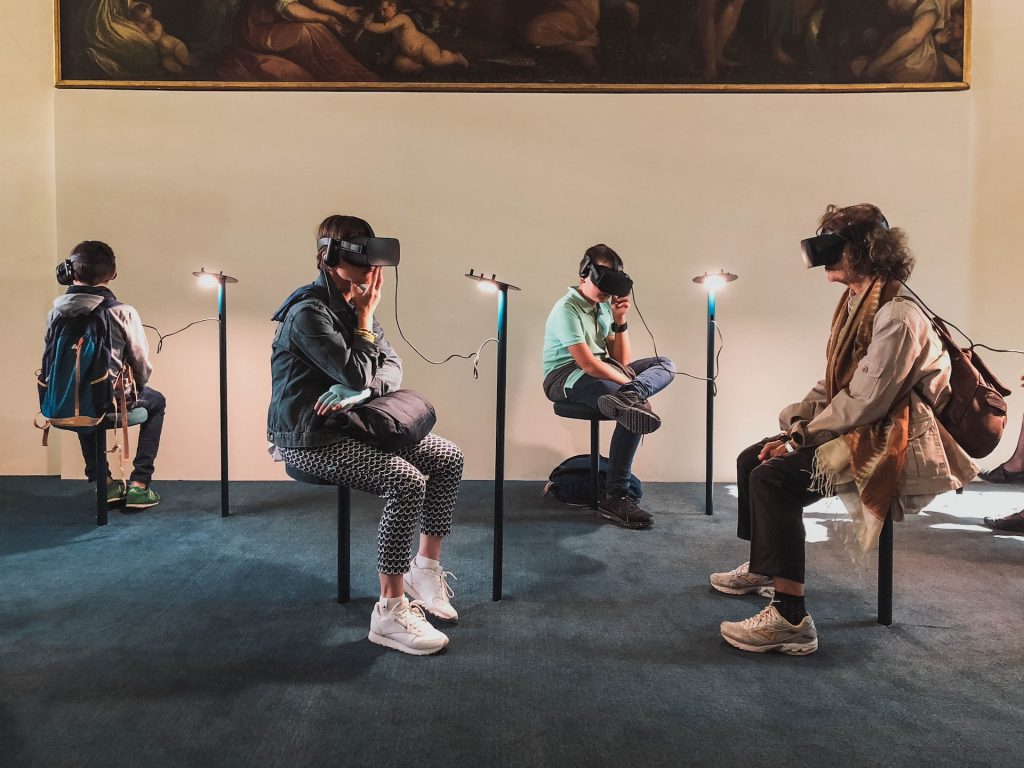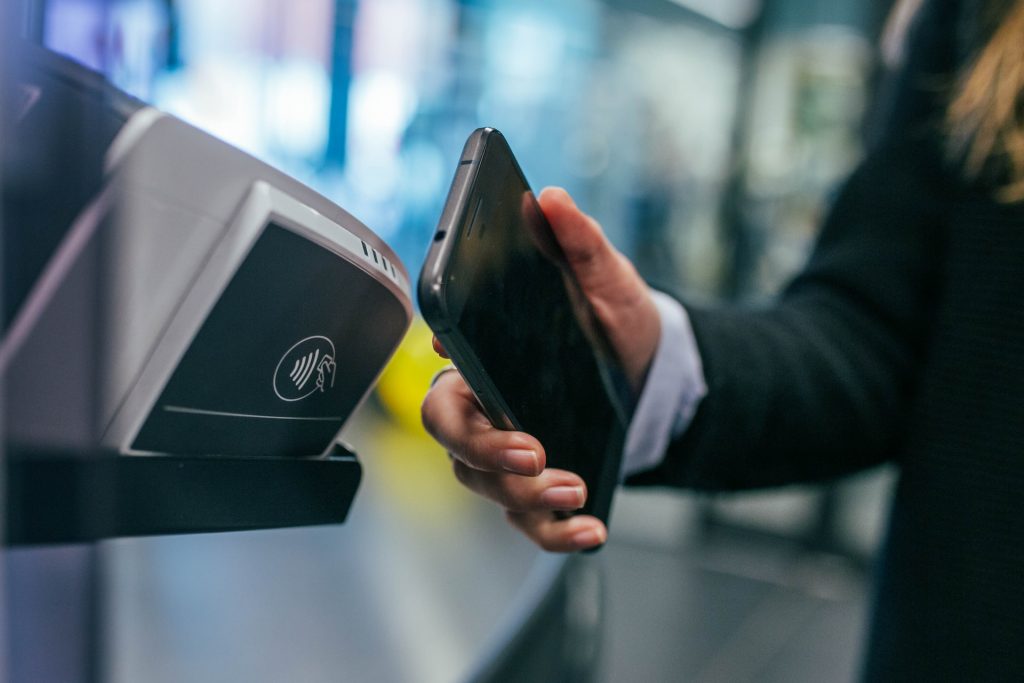
The Evolution Of Customer Experience Over the Last Decade [+ Future Trends]
Jerry Wallis
15 min read

Over the years, technology has significantly impacted customer experience, transforming how businesses interact with their customers. With advancements in technology, customers have become more digitally savvy, so their expectations have increased. In this article, we will look back at the impact of technology on CX and explore what the future holds.
Before checking out the evolution of customer experience, let’s first establish what it actually means.
First, What Is Customer Experience? 💁
Customer experience (CX) is how you feel when you buy something or use a service, whether online or in-store. It can be compared to going to a restaurant and having a good time because the waiter is courteous and the food is delicious or having a bad time because the waiter is outright rude and the food is terrible.
Customer experience is not just about the product or service itself but also about how the people who work there treat you and how easy or difficult it is to buy or use what you want. When a company wants to make its customers happy, it will try to make sure everything is effortless and pleasant for them so that they will want to come back and buy more things in the future.

In other words, customer experience is a consumer’s cumulative impression of a company based on its interactions with its products, services, and employees. It is the combination of thoughts, emotions, and perceptions that a customer forms during their entire journey with the company, from the first touchpoint to the last.
It is not just a transaction; it is an impression, an intangible feeling surrounding the brand and leaving a lasting mark on the consumer’s mind. It is the total of all the small moments of delight, frustration, and satisfaction that a customer experiences during their interactions with the company. A company prioritising customer experience understands that it is not just about selling a product or service but about creating a meaningful and memorable experience for the customer, fostering loyalty and trust.
The key to a successful customer experience is treating every interaction as an opportunity to create a connection, provide value, and exceed expectations. So, without further ado, let’s dive deeper into the history and evolution of customer experience over the last decade.
The Evolution Of Customer Experience In The Last Decade 👥
Over the past decade, customer experience has undergone a significant transformation driven by advances in digital technologies and shifting consumer expectations. As a result, CX has become a top priority for businesses as they recognise its impact on customer loyalty, brand reputation, and revenue growth. So, companies have had to adopt new technologies and strategies to keep up with these changes to deliver seamless and personalised experiences across channels.
One of the most significant changes has been the rise of mobile devices and social media, which have changed how customers interact with brands. This shift has led to an increased focus on mobile-first and omnichannel experiences. As a result, companies have invested heavily in developing mobile apps and responsive websites that deliver a consistent experience across all devices. They have also integrated social media channels into their CX strategies to provide real-time support and engagement.
Another emerging trend is using customer data and analytics to personalise interactions and improve the overall CX. Companies leverage data from various sources, such as CRM systems, social media platforms, and web analytics, to gain insights into customer behaviour and preferences (e.g. businesses using Pendo to improve product experience). These insights are then used to create more targeted and relevant experiences that meet the specific needs of individual customers. Machine learning and other advanced analytics technologies are also being used to automate the process of data analysis, enabling businesses to make data-driven decisions quickly and efficiently.
In addition to personalised experiences, businesses also focus on creating emotional connections with customers. This involves delivering experiences that evoke positive emotions and fosters long-term customer relationships. To achieve this, companies are using storytelling, immersive experiences, and gamification techniques to create engaging experiences that resonate with customers on an emotional level.
The Impact Of Technology On Customer Experience 🔥
One such impact has been the rise of digital channels. Customers now expect to be able to interact with businesses through a variety of digital channels, such as websites, mobile apps, social media platforms, and messaging apps. This has led to enterprises investing heavily in digital technologies to improve CX and offer a seamless omnichannel experience.
Another significant impact of technology on CX has been the use of automation and artificial intelligence technologies. For example, chatbots, virtual assistants, and other AI-powered tools have been used to automate repetitive tasks and provide 24/7 customer support. This has helped businesses reduce response times, improve efficiency, and improve customer experience.
Plus, technology has enabled businesses to gather customer data from multiple sources, including social media, web analytics, and customer relationship management systems. This data is used to gain insights into customer behaviour and preferences, enabling businesses to personalise the customer experience and deliver more relevant and targeted content.
Looking ahead, technology is expected to continue to impact CX in significant ways. For example, the rise of augmented reality and virtual reality technologies is expected to transform CX in the retail, travel, and entertainment industries. AR and VR experiences will enable customers to interact with products and services immersively, providing a more engaging and memorable experience.
Predictive analytics is another area where technology is expected to impact CX. Predictive analytics can help businesses anticipate customer needs and preferences, enabling them to offer personalised recommendations and support. Again, technology has impacted CX, transforming how businesses interact with customers. Looking ahead, companies must continue to innovate and leverage technology to meet their customers’ evolving expectations. By doing so, they can differentiate themselves in the market, drive customer loyalty and advocacy, and achieve sustainable growth.
The Future Of Customer Experience 🔮
The customer experience landscape constantly evolves, driven by technological advancements, changing customer expectations, and new industry trends. Below are some of the key trends and predictions for the future of CX in the next decade.
🧏 Personalisation
Personalisation will continue to be a critical component of CX as customers increasingly expect tailored experiences. This includes personalised recommendations, customised products and services, and targeted marketing messages.
🔊 Voice & Natural Language Processing
With the rise of smart speakers and voice assistants, businesses are investing in voice and natural language processing technologies to enhance the customer experience. Customers can now interact with companies through voice-enabled channels, such as chatbots and virtual assistants like Amazon Alexa, providing a more natural and convenient experience.
👓 Augmented & Virtual Reality

Augmented and virtual reality technologies will continue transforming CX, particularly in industries such as retail and entertainment. These technologies enable customers to interact with products and services immersively, providing a more engaging and memorable experience.
📱 Omnichannel Experience
The omnichannel experience will become increasingly important as customers expect seamless interactions across all channels, including online, mobile, social media, and physical locations. Businesses must invest in technologies that enable a consistent experience across all touchpoints.
📊 Predictive Analytics
Predictive analytics technologies will help businesses anticipate customer needs and preferences, enabling them to provide proactive support and personalised recommendations.
🧠 Artificial Intelligence
AI-powered chatbots, virtual assistants, and other tools will become more sophisticated, providing 24/7 customer support, personalised interactions, and automated responses to common enquiries.
♻️ Sustainability
Sustainability will become essential in CX as customers become more conscious of environmental and social issues. Businesses will need to prioritise sustainability in their products, services, and operations to meet customer expectations.
The Changing Role Of Customer Service 🎭
Customer service has always been an essential component of customer experience, and in recent years, its role has evolved significantly. With the rise of experience-driven business models, businesses have recognised the importance of delivering exceptional customer experiences across all touchpoints. Some of the significant changing roles of customer service in the age of experience are discussed below.

- From Reactive To Proactive: Traditional customer service models have been reactive, responding to customer enquiries and resolving issues as they arise. However, in the age of experience, businesses are moving towards proactive customer service models. This involves identifying and addressing potential problems before they occur, providing personalised recommendations, and anticipating customer needs.
- From Transactions To Relationships: In the past, customer service was often seen as a transactional interaction between a customer and a business. Today, customer service has become critical to building and maintaining long-term customer relationships. This includes personalised interactions, targeted recommendations, and ongoing customer engagement beyond initial purchases.
- From Cost Center To Revenue Driver: Historically, customer service has been viewed as a cost centre, with businesses seeking to minimise costs and optimise efficiency. In the age of experience, however, customer service has become a revenue driver, with companies recognising the impact of exceptional customer experiences on customer loyalty, advocacy, and revenue growth.
- From Channel-Specific To Omnichannel: In the past, customer service was often siloed by channel, with separate teams handling phone, email, and chat enquiries. Today, businesses adopt omnichannel customer service models, enabling customers to interact seamlessly across all channels and touchpoints.
- From Transactional Metrics To Experience Metrics: Traditional customer service metrics, such as average handle time and first call resolution, focused on transactional efficiency. In the age of experience, businesses are adopting experience metrics, such as customer satisfaction and Net Promoter Score, to measure the impact of customer service on the overall customer experience.
The Power Of Feedback 🗣️
Customer feedback has always been a valuable source of information for businesses, but in the last decade, customer experience management has evolved to prioritise the power of feedback. With the rise of digital channels and technological advancements, businesses can now collect and analyse feedback in real-time, enabling them to make data-driven decisions that improve the customer experience. Here’s how.
💬 Real-Time Feedback
With the rise of digital channels, businesses can now collect feedback in real-time, enabling them to address customer concerns and improve the customer experience on the go. This has transformed customer service and allows businesses to provide a more personalised and engaging customer experience.
🗃️ Omnichannel Feedback Collection
Customer experience management has evolved to prioritise omnichannel feedback collection, enabling businesses to collect feedback from various channels, such as email, social media, and chatbots. This has enabled companies to gain a more comprehensive view of the customer experience and identify areas for improvement across all touchpoints.
🔎 Sentiment Analysis
Advances in natural language processing and machine learning have enabled businesses to analyse feedback at scale, using sentiment analysis to gain a deeper understanding of customer attitudes and emotions. This has helped companies to identify trends and patterns in customer feedback and make data-driven decisions that improve the customer experience.
🗺️ Customer Journey Mapping
Customer experience management has evolved to prioritise customer journey mapping, enabling businesses to visualise the customer experience and identify pain points and opportunities for improvement. This has allowed companies to make targeted improvements to the customer experience, driving loyalty and advocacy.

🎬 Actionable Insights
Customer experience management has evolved to prioritise actionable insights, providing businesses with clear and concise feedback that enables them to make data-driven decisions that improve the customer experience. This has helped companies prioritise their efforts and strategically invest in customer experience improvement. For example, you can use Microsoft Power BI to gain data-driven actionable insights.
🎯 Customer-Centric Culture
Customer experience management has evolved to prioritise a customer-centric culture, placing the customer at the centre of all business decisions. This has enabled businesses to deliver more personalised and engaging experiences that drive customer loyalty and advocacy and differentiate themselves in the market.
How Has Social Media Transformed Customer Experience? 🤳
Social media has revolutionised how businesses interact with customers, and in the last decade, it has transformed the customer experience. With the rise of social media platforms like Facebook, Twitter, Instagram, and TikTok, businesses can now communicate with customers in real-time, engage with them, and leverage user-generated content to drive brand awareness and loyalty. The points below discuss how social media has transformed the customer experience in the last decade.
- Real-Time Communication: Social media has enabled businesses to communicate with customers in real-time, providing instant support and promptly addressing customer enquiries and concerns. This has transformed customer service, allowing various firms to provide a more personalised and engaging customer experience.
- Increased Customer Engagement: Social media has provided businesses a platform to engage with customers personally, creating a more intimate and authentic relationship between companies and customers. This has enabled businesses to build brand awareness and loyalty and drive customer advocacy.
- User-Generated Content: Social media has enabled businesses to leverage user-generated content, such as customer reviews, photos, and videos, to drive brand awareness and loyalty. This has created a more authentic and trustworthy brand image, enabling businesses to reach new audiences through social media sharing and amplification.
- Targeted Advertising: Social media has enabled businesses to target advertising to specific audiences based on demographic and psychographic data, promoting more personalised and effective marketing campaigns. This has transformed how businesses reach and engage with customers, enabling them to drive revenue growth through more effective advertising strategies.
- Social Listening: Social media has enabled businesses to listen to customer feedback and sentiment, providing valuable insights into customer needs and preferences. This has helped companies to better understand their customers and deliver more personalised experiences.
- Brand Reputation Management: Social media has enabled businesses to manage their brand reputation in real-time, responding to customer feedback and addressing negative comments and reviews before they escalate. This has helped companies to maintain a positive brand image and prevent reputational damage.
How COVID-19 Accelerated The Digital Transformation Of Customer Experience 😷
The COVID-19 pandemic has profoundly impacted businesses worldwide, forcing them to adapt quickly to new challenges and changing customer behaviour. One of the most significant changes has been accelerating the digital transformation of customer experience. Some of the changes are discussed below.
🌐 Shift To Online
With lockdowns and social distancing measures, customers were forced to shift their online shopping habits. This led to a surge in e-commerce sales and highlighted the importance of digital channels in the customer experience. Even after the end of the pandemic, more and more people still rely on online shopping or home-delivery options and hesitate to go to stores to make purchases.
👩💻 Digital Communication
With in-person interactions limited, businesses had to find new ways to communicate with customers, including ensuring digital accessibility to cater to a wider audience. This led to a surge in digital communication channels such as email, chatbots, and social media, which enabled businesses to stay connected with customers and provide support remotely. They also make the communication process human-like and engaging to customers who are accustomed to using digital channels.
🛒 Contactless Payment

COVID-19 accelerated the adoption of contactless payment methods, such as mobile payments and digital wallets. This enabled businesses to provide customers with a safer and more convenient payment experience compared to traditional methods.
💻 Virtual Services
COVID-19 urged businesses to find new ways to provide services remotely. This led to the development of virtual services such as online consultations, virtual events, and remote support, which have become increasingly popular and are likely to continue even after the pandemic ends.
🧔 Personalisation
With customers relying more heavily on digital channels, businesses have had to find new ways to provide a personalised experience. This has led to the development of new technologies, such as AI-powered chatbots and customised recommendations, which enable businesses to provide a more tailored experience for each customer.
📈 Data Analytics
COVID-19 has highlighted the importance of data analytics in understanding customer behaviour and identifying trends. Businesses have had to invest in new technologies and processes to collect and analyse customer data in real-time, enabling them to make data-driven decisions that improve the customer experience. For example, you can use Clearbit for stellar marketing intelligence.
Final Words: The Evolution Of Customer Experience 📋
In conclusion, the last decade has seen significant changes in customer experience, driven by technological advancements, changing customer behaviour, and increasing competition. From the rise of customer-centricity to the adoption of digital channels, businesses have had to adapt quickly to stay relevant and meet evolving customer expectations. Several trends will likely shape the future of customer experience, including the increased focus on personalisation, the growing importance of data analytics, and the rise of artificial intelligence and automation.
As businesses continue to navigate this rapidly evolving landscape, it will be essential to prioritise customer experience and invest in the necessary technologies and processes to stay ahead of the curve. Those who can deliver exceptional customer experiences that are personalised and efficient will be well-positioned to succeed in the future. A customer experience transformation partner can help you do that and much more, streamlining your processes and helping you scale by using modern technologies for greater customer experience.
If you want to know more about customer experience trends and their evolution, feel free to reach out to us for a friendly discovery chat. We’re always happy to hear from you!
Topics
Published On
March 08, 2023

